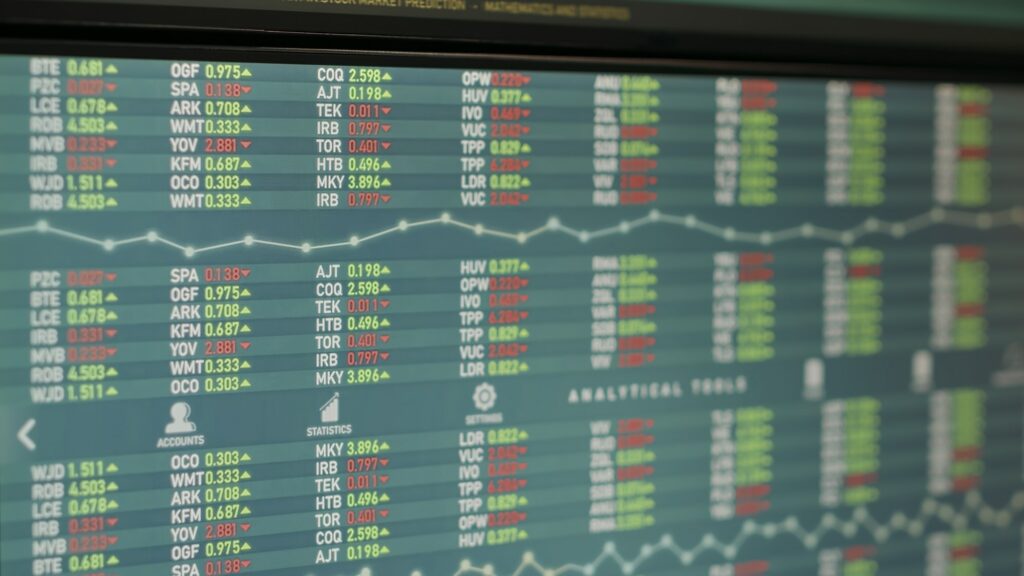Understanding Forex Trading Strategies
Forex trading strategies apply specialized trading tactics to earn profits from buying and selling currency pairs in the forex market. Traders developing their trading systems should paper trade and backtest their techniques to ensure they function properly before investing real money. Understanding every factor influencing the currency pairs will help you apply forex trading techniques more successfully. This article below will guide you on how to face trading forex strategies in 2024.
Exploring Different Forex Trading Approaches
Forex trading strategies are the approaches and ways of thinking forex traders use. There are strategies to cover the long and short term to maximize your talents and the instruments at your disposal to create a successful forex trading strategy.
Ultimately, your forex trading strategy determines how you will approach the markets and where you will enter and exit them based on their current state.
A forex trading strategy performs quite effectively when traders adhere to the regulations. But, just like with anything else, a single method may not always be a one-size-fits-all approach, so what works now may not always work tomorrow.
Best Forex Trading Strategies

Day Trading: Maximizing Profits with Intraday Strategies
Day trading profits increase more quickly since you can carry over your profits from one trading day to the next. Likewise, some brokers are seeing interest in overnight cash balance positions. You might earn interest in certain places if you can finish the day with cash.
Support and resistance regions for day trading might be improved. Also, many day trading movements are computer algorithmic. It resembles trading against the machines, which can be perilous because the latter can enter and exit positions much more quickly due to their rapid trigger response.
Position Trading: Long-Term Investing for Consistent Gains
Traders choose a winning security that they are confident in over the long term and buy it to hold for months or even years rather than setting entry and exit points based on price breaks or market fundamentals. One of the more accessible tactics, position trading, is relatively simple to understand, even for beginners.
Swing Trading: Capitalizing on Short-Term Price Swings
By definition, a swing trade aims to make money quickly—within a few days to a few weeks. Swing strategy traders use technical analysis to identify profitable short-term price cycles known as price swings.
This strategy’s traders frequently rely on buy and sell signals, support and resistance levels, and momentum indicators. Traders can use this to identify assets in the forex market that may experience significant swings in value.
Scalping Trading: Quick Profits in Fast-Moving Markets
Forex scalping refers to quickly closing minor trades at extremely modest profits. Scalping may be as profitable and time-consuming as you want it to be. Your ability to act quickly is essential to the scalping method’s success, enabling you to profit from minute market movements. This method frequently uses low time-frame charts, like those included in the MetaTrader 4 Superior Edition package.
Carry Trade: Leveraging Interest Rate Differentials
Carry trading is most frequently used in currency trading. An investor takes out a low-interest loan in one currency and uses it to invest in another currency with a higher interest rate, earning a profit roughly equal to the spread between the two rates. Carry trading is sometimes a very risky tactic. Skilled risk management is necessary to reduce the likelihood of significant losses.
Choosing the Right Strategy for You: Considerations and Recommendations
- Identify Your Trading Goals: Determine if you want short-term profits, long-term investments, or a combination. Also, assess how much risk you’re comfortable with and how much time you can commit to trading.
- Evaluate Market Conditions: Analyze the current market situation and choose strategies that work best. Consider factors like the market’s volatility, ease of buying and selling, and patterns in price trends.
- Understand Your Trading Style: Consider your preferred trading style. Do you like quick trades, or are you patient with long-term investments? Consider your personality, available time, and how you handle emotional ups and downs.
- Leverage Your Skills and Knowledge: Focus on your strengths and expertise. If you’re good at technical analysis, strategies like swing trading or scalping might be a good fit. If you understand macroeconomics well, consider news trading.
- Learn from Resources: Explore reputable educational resources, courses, and mentorship programs to improve your understanding of strategies. Connect with experienced traders to gain insights from their experiences.
- Practice with Demo Accounts: Use demo accounts brokers provide to test different strategies without risking real money. This helps you understand their effectiveness and find strategies that suit you.
- Stay Open to Adaptation: Adapt your strategy as market conditions change. Stay flexible and continuously refine your approach based on feedback, data analysis, and lessons learned from your trades.
Mitigating Risks and Practicing Effective Risk Management
When it comes to forex trading, it’s important to have a clear plan for managing risks and protecting your capital. Here are some practical steps you can take to mitigate risks and practice effective risk management:
- Set Realistic Expectations: Understand that forex trading involves both profits and losses. Avoid chasing unrealistic profits, leading to excessive risk-taking and emotional decision-making. Set realistic expectations and accept that losses are a normal part of trading.
- Use Proper Position Sizing: Determine the appropriate size for each trade based on your risk tolerance and account size. Avoid risking much of your capital on a single trade, as it can amplify losses. Proper position sizing helps protect your account from significant drawdowns.
- Set Stop-Loss Orders: Always use stop-loss orders to limit potential losses. A stop-loss order is a pre-set instruction to close a trade when it reaches a specific price level. This ensures that you define your risk in advance and helps prevent large losses if the market moves against you.
- Diversify Your Portfolio: Don’t put all your eggs in one basket. Consider trading multiple currency pairs and other financial instruments to spread your risk. Diversification can help reduce the impact of a single trade on your overall account balance.
- Stay Informed and Adapt: Stay updated on market news, economic indicators, and geopolitical events that can influence currency prices. Be flexible and ready to adapt your trading strategy as market conditions change. Staying informed allows you to identify potential risks and adjust your positions accordingly.
- Maintain Discipline: Stick to your trading plan and avoid impulsive decisions driven by fear or greed. Emotional trading can lead to poor risk management. Maintain discipline, follow your predetermined strategy, and avoid overtrading.
- Review and Analyze Your Trades: Regularly evaluate your trading performance, including winning and losing trades. Analyze patterns, strengths, and weaknesses in your strategy. Learn from your mistakes and adjust to improve your risk management and overall trading approach.
- Consider Risk Management Tools: Some offer risk management tools such as guaranteed stop-loss orders or negative balance protection. These tools provide additional safeguards and help mitigate potential risks during volatile market conditions or unexpected price movements.
Conclusion
There are a variety of methods available. Consider scalping or day trading if you are trading for fun and some extra money. Instead, pick a position or a swing trade if you wish to invest to build your wealth. Those who have no interest in macroeconomics or international politics should not engage in news trading.
In the end, you should conduct the necessary research to determine what each approach delivers, what is necessary for it to be effective, and how those elements align with your resources and abilities. Also, regardless of the technique you decide to use, forex trading is risky, therefore you shouldn’t invest more money than you can afford to lose.






